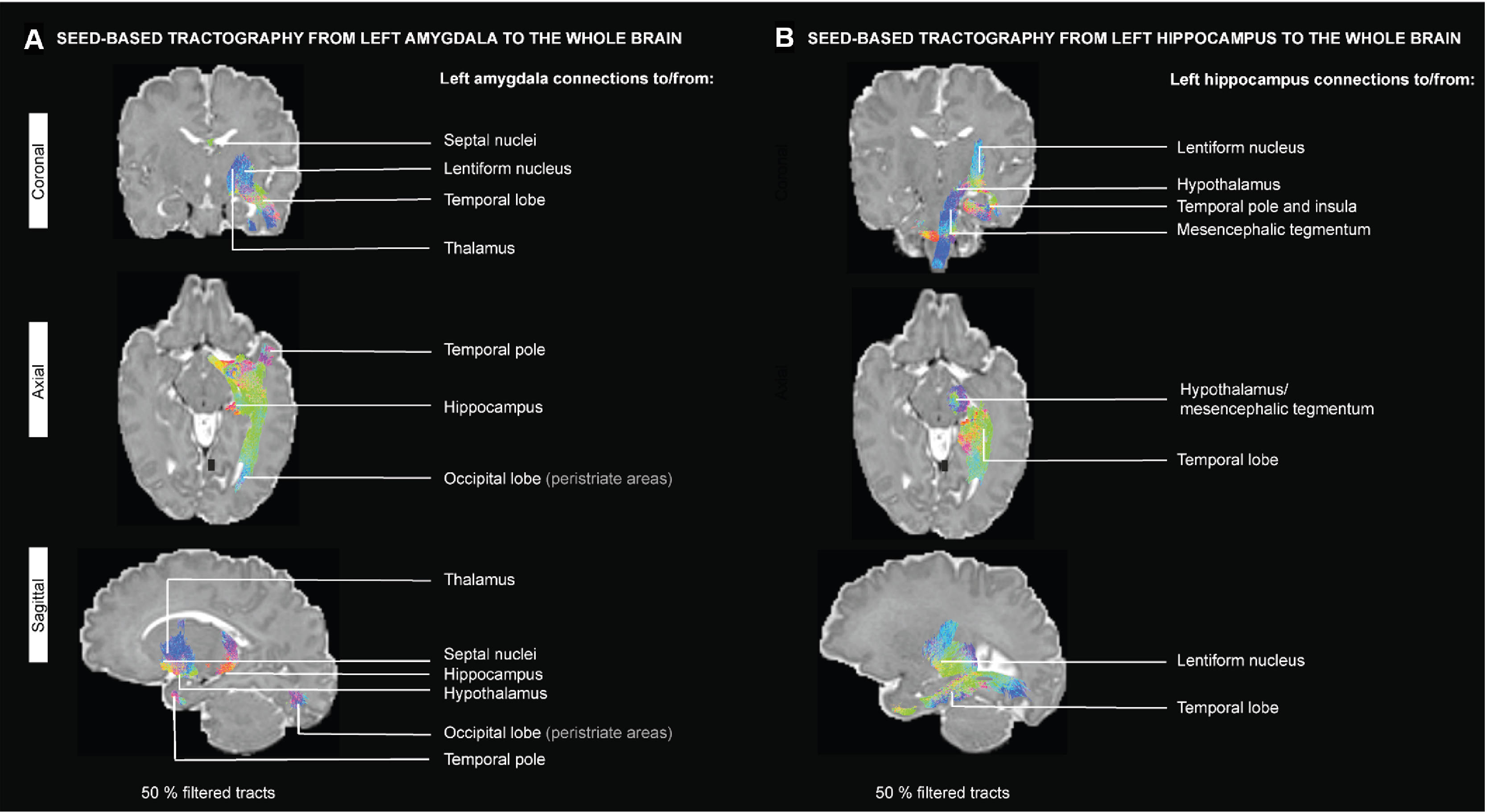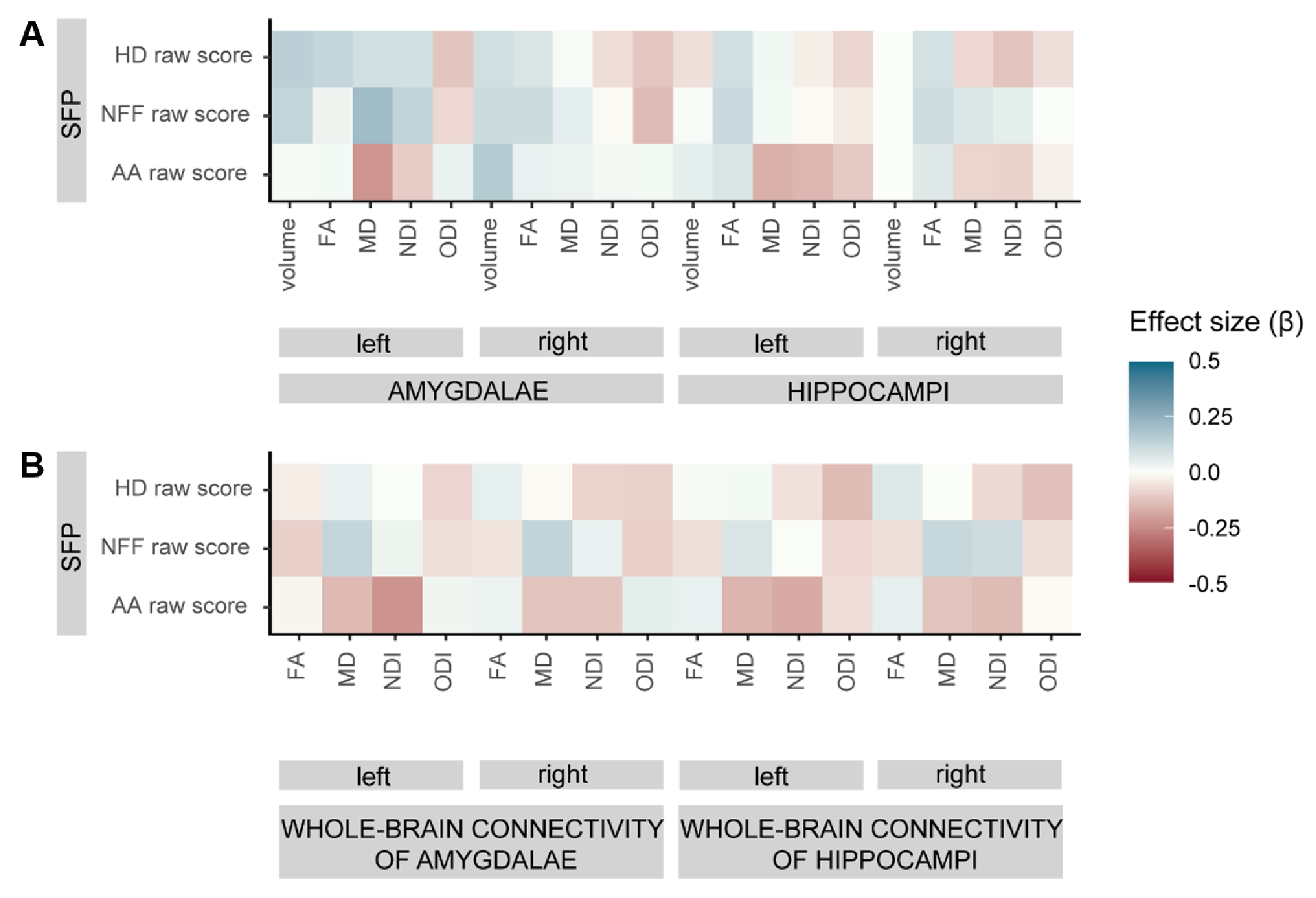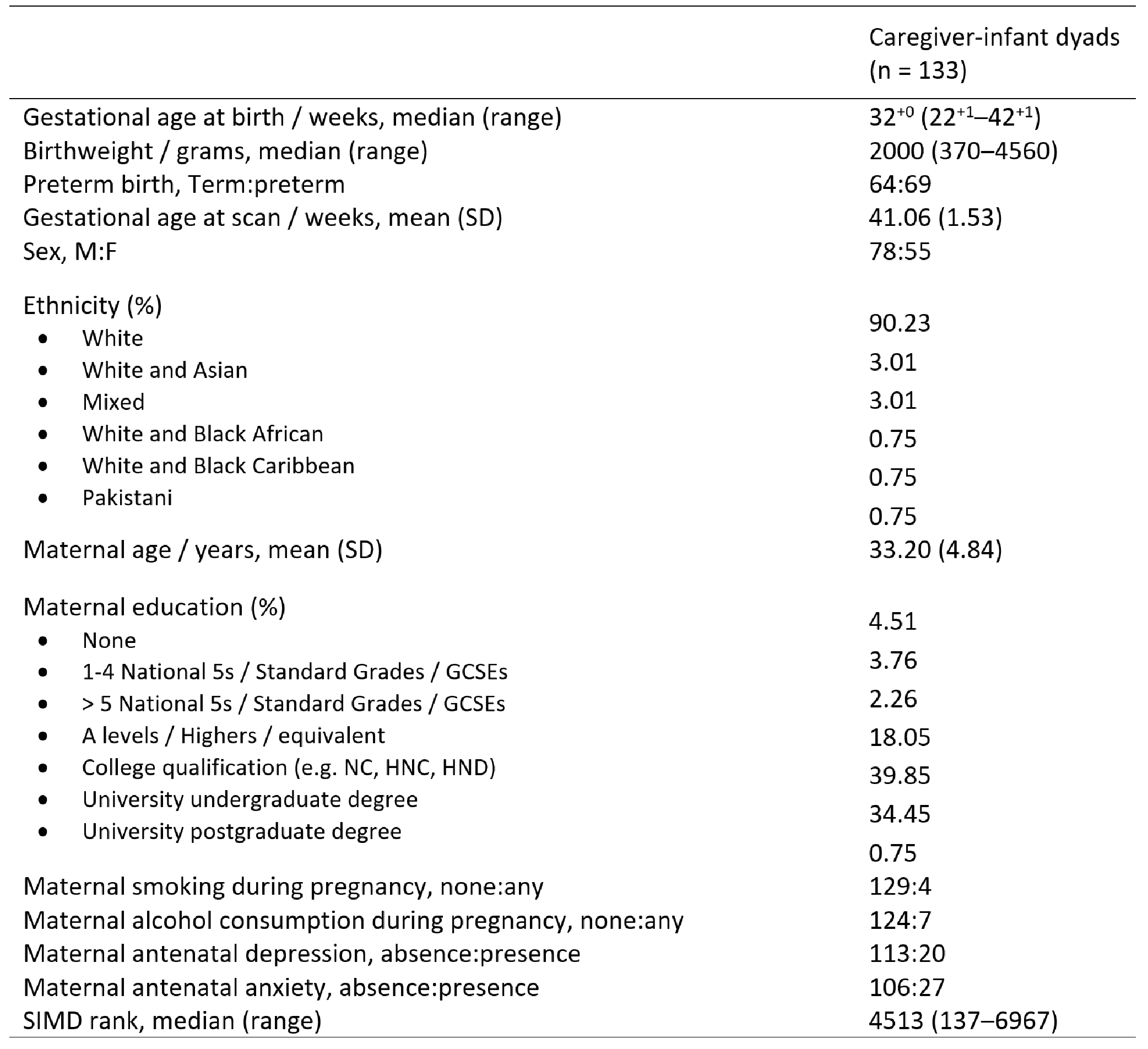Neonatology
Session: Neonatal Neurology 6: Clinical
551 - Infant attachment does not depend on neonatal amygdala and hippocampal structure and connectivity.
Saturday, May 4, 2024
3:30 PM - 6:00 PM ET
Poster Number: 551
Publication Number: 551.1313
Publication Number: 551.1313

Lorena Jiménez Sánchez, BSc Health Biology, MSc Neuroscience, PhD in Neuroscience (she/her/hers)
Postdoctoral Research Fellow
University of Edinburgh
Edinburgh, Scotland, United Kingdom
Presenting Author(s)
Background: Infant attachment is an antecedent of socioemotional abilities in childhood, which can be adversely affected by preterm birth. The structural integrity of amygdalae and hippocampi and their networks predict socioemotional functioning, but these structures can develop atypically in preterm infants.
Objective: To investigate associations between neonatal amygdalae and hippocampi structure and their whole-brain connections and attachment behaviours at 9 months of age in a cohort enriched for prematurity.
Design/Methods: 133 neonates (median gestational age 32 weeks, range 22.14–42.14) underwent MRI at term equivalent age. Amygdala and hippocampal macro- and micro-structure (volume, fractional anisotropy, mean diffusivity, neurite dispersion index, orientation dispersion index) were computed using the dHCP pipeline and seed-based tractography was used to generate a whole-brain connectivity mask for each unilateral nucleus (Figure 1). At 9 months, attachment behaviours (distress, fretfulness, attentiveness to caregiver) were coded from infant responses to the Still-Face Paradigm. General linear regression was used to investigate associations between each brain structural measure as predictor, and each attachment behaviour as outcome. P-values were adjusted for false-discovery rate using the Benjamini-Hochberg procedure separately for analyses of left/right amygdalae or hippocampi and their left/right whole-brain connections.
Results: Attachment outcomes were derived from 119 mother-infant dyads, 13 father-infant dyads and one grandmother-infant dyad. Clinical and demographic characteristics of participants are detailed in Table 1. After multiple comparisons correction, there were no significant associations between neonatal amygdala or hippocampal structure and connectivity and attachment behaviours at nine months of age (standardised β values ranging from -0.23 to 0.21 SDs, adjusted p-values > 0.34; Figure 2).
Conclusion(s): These data suggest that the amygdala and hippocampus in the neonatal brain are not integral parts of neural networks contributing to the development of infant attachment behaviours. Further studies are needed to investigate the neural basis of infant attachment and its role in socioemotional development after preterm birth.



